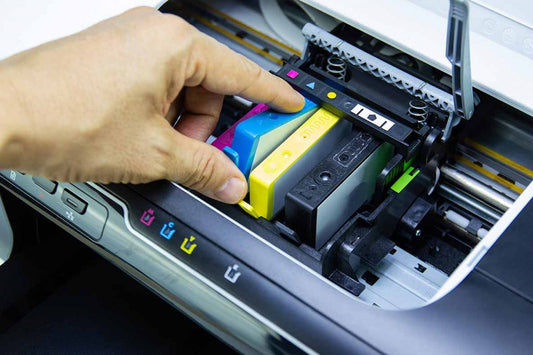You wouldn’t print your resume on the same paper type you’d print a recipe on, would you? We hope not! For all office and personal uses, there is a paper type that is perfect. How do you navigate the different sizes, coatings, and weights? Well, we’ve got the guide for you on the various printing paper types and what they’re used for.
Out of the box: preset paper types
Some projects require a custom paper selection, but many paper types are set up to be multi-use. These boxed paper types can be anything from a gloss coat to cardstock, and each has their preferred use. Glossy paper is best used for photographs, as the slick surface allows ink to shine. It should never be used for text-based documents, as the surface is too smooth and prone to bleeding if multiple copies are run. Cardstock can be used for business cards, place cards, or anything you’d like to have a thick, sturdy presence. Inkjet or laser paper is best used with the corresponding printer, but each are good for completing large projects.
Size does matter with your printing paper
The most commonly seen printing paper measurement is the ‘A’ scale. A type paper is easy to remember because it scales smoothly. A10, the smallest size, is a 1×1.5” paper while A1 maxes out the print area with a mighty 23.4×33.1” of space. The most common printing paper size is A4, which is approximately 8.3×11.7”. This is used for most ‘normal’ printing, but any printer or print supply company worth their salt will stock all sizes in between A1 and A10. There is also the ‘C’ scale, used exclusively for envelopes. The easiest way to remember this is that the envelopes correlate with the printing paper, with a little extra wiggle room to be stuffed. A1 paper will go with a C1 envelope. Easy, right?
Different paper weights
Potentially the most immediate way of telling the quality of a piece of paper is with its weight. Paper weight is measured in GSM, or grams per square meter. As a general rule, the higher the GSM number the thicker the paper. 300GSM is reserved for only very sturdy, thick paper such as business card stock. You would never want to print a business card on poster paper (about 130GSM), so make sure to choose a paper type that has a weight that will work with your project. If you need assistance with your printing




